When you make purchases through links on this site, The Track Ahead may earn an affiliate commission. Also, these posts are based off my own experiences. I am not responsible for any action you take as a result of reading this. Learn More
It’s no doubt that checking the tread depth of your tires is one of the most important maintenance items you can do on your vehicle. This can be done using a tire tread depth tool and measuring the tread depth at different points on the tire to determine whether the tires are still adequate or if they need to be replaced.
Not everyone always has a tire tread depth tool on hand, so another easy way of checking the tread depth is to use something that almost everyone has laying around: a penny. I’ve laid out the process for checking tire tread depth using a penny and how you can use various indicators on the penny to determine the level of the tire’s tread depth.
Why it’s Important to Measure your Tire Tread Depth
The first and more obvious reason for checking the tread depth on your tires is to check if they still have enough tread to safely provide enough vehicle traction on the road. Driving on tires that have low tread can be dangerous since you can lose traction while driving. Furthermore, driving on tires that have almost no tread left can cause physical damage to the tire, which can lead to an accident or leave you stranded on the side of the road.
Secondly, checking the tire tread depth allows you to determine whether or not your tires are wearing evenly. Since checking the tire tread involves checking at several different spots on each tire, it allows you to check where the tire may be wearing more than others (if at all.) Tires should be rotated approximately every 7,500 miles to evenly wear the tire tread; checking the tread depth helps to keep you on that maintenance interval.
Measuring Tread Depth with a Tool
Tire tread depth is measured by 1/32″ intervals. When tread depth measures 2/32″ or less, tires are generally considered bald and require replacement. If tread depth is greater than 6/32″, it is considered adequate. And if you get a reading between 2/32″ and 6/32″, you should consider replacing tires soon.
Below is an actual tire tread depth gauge, which should give you an idea of the relative depth of the tire tread readings. This tool will give you the most accurate readings down to the 1/32″ measurement. If you are looking for a tire tread depth tool and want to know how to use it, you can find more on that here.
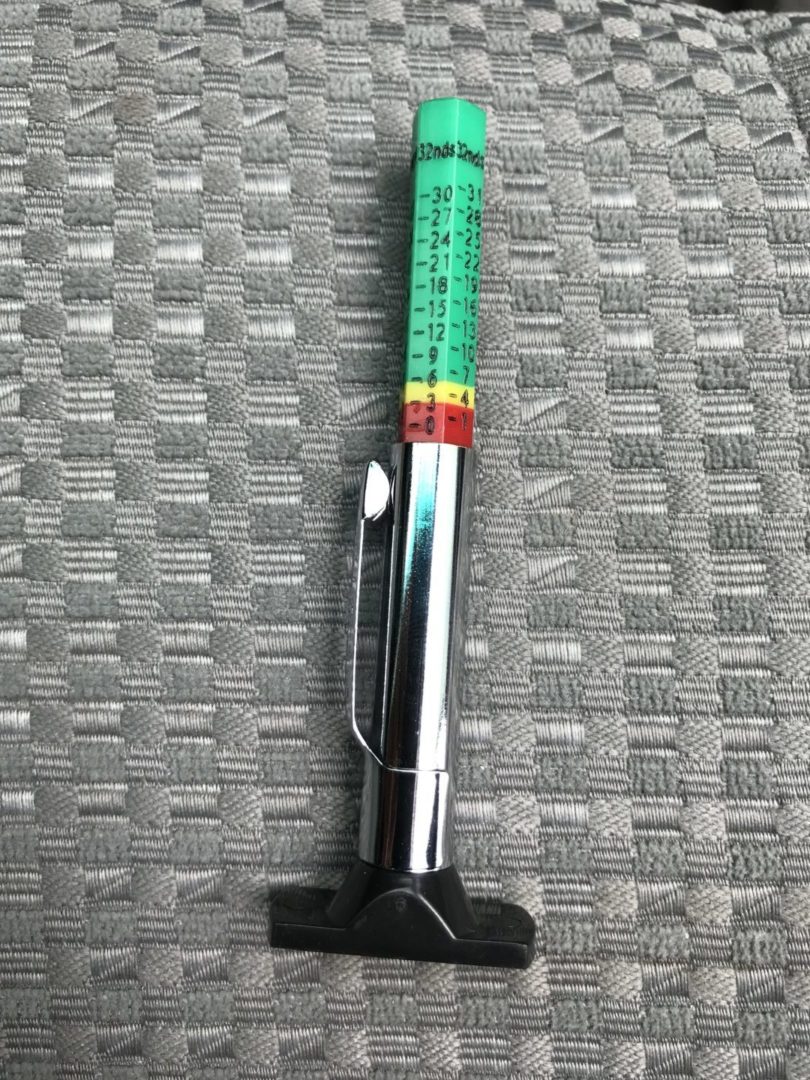
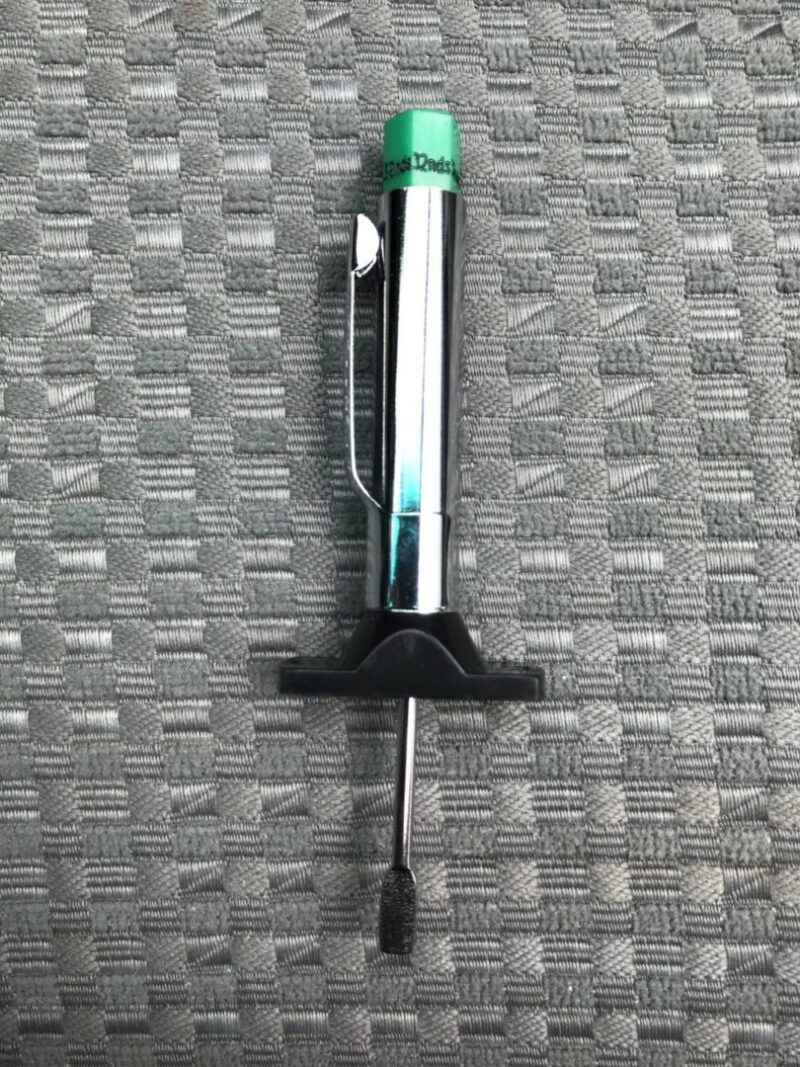
How to Check Tire Tread Depth with a Penny
Below is a tire that is nearing the end of its life. If you look at the major tread grooves on this tires, it looks quite low. We’ll grab a penny (ideally a clean one where you can see Lincoln’s head clearly) and begin with checking the tire tread depth.
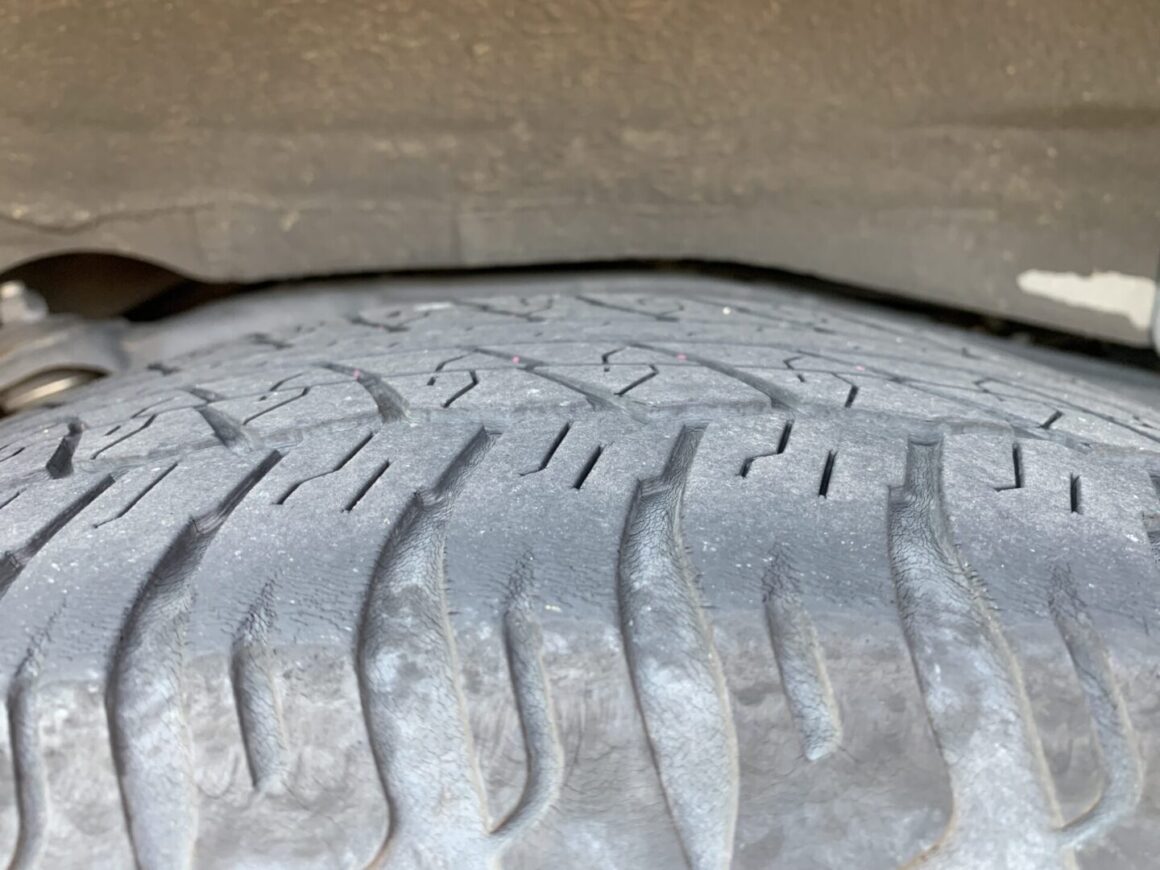
When using a penny to measure tire tread depth, it should be flipped upside down and inserted into the major grooves of the tire tread. When inserting the penny upside down into the tread, you will see part of Lincoln’s head covered by the tire tread. The colors below give you a general idea of the condition of your tire tread.
RED: If the tire tread covers the penny somewhere up to the top of Lincoln’s head, then the tread is less than 2/32″ and you’re in need of a tire replacement immediately.
YELLOW: If the tire tread covers the penny somewhere between the top of Lincoln’s head, to the top of his eyes, the tread is somewhere between the 2/32″ and 6/32″ tread depth. If you have a reading in this range, you should consider replacing the tires soon.
Finally, if the tire tread covers any more than up to Lincoln’s eyes, then the tire tread is adequate and there is no need to replace your tires.
Place a penny upside down in a few spots in the major tire treads and check how much of Lincoln’s head is covered. Make sure to bend down low so your eye is level with the tire tread surface to get an accurate reading.
Below, the penny is covered up to Lincoln’s forehead. The reading at the inner part of the tire covers more of Lincoln’s forehead than the reading on the outer part of the tire; this indicates some uneven tire wear. Overall according to the readings, I should be replacing the tires soon. Perform this check on all your tires at each of the major grooves and record your findings.
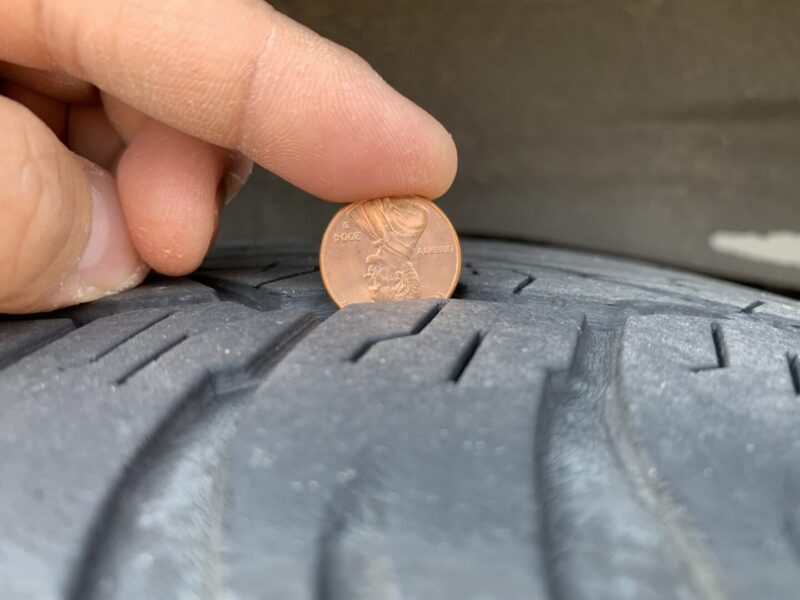
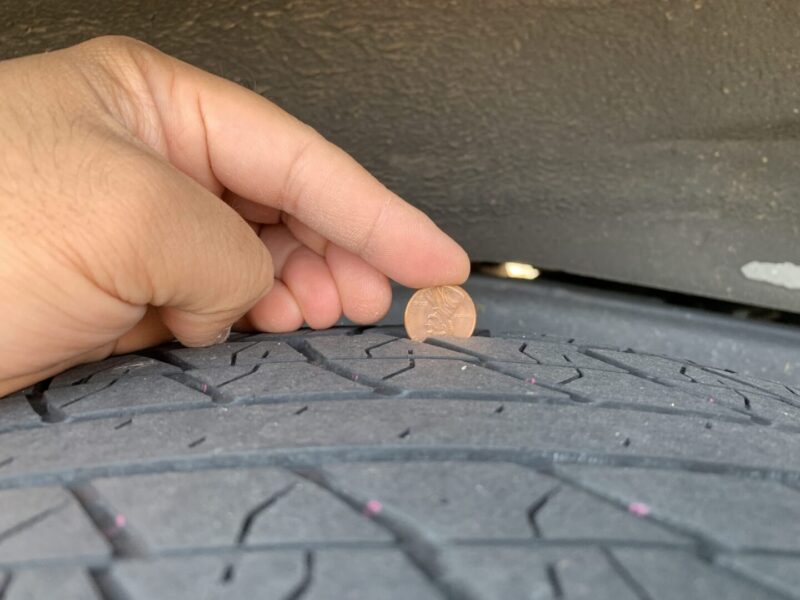
Since my tires were in need of replacing, I got a new set of tires. To compare, here is what the tread of a new tire looks like. It should be visibly apparent how much more tread you have compared to tires that have low tire tread.
Taking some tread depth measurements again using the penny test shows Lincoln’s head and face almost completely covered indicating that the tire tread depth is more than adequate.
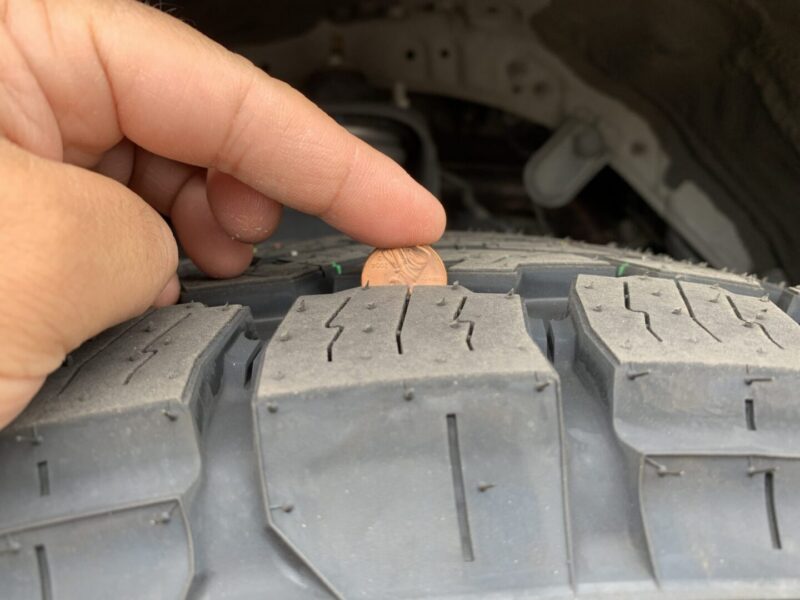
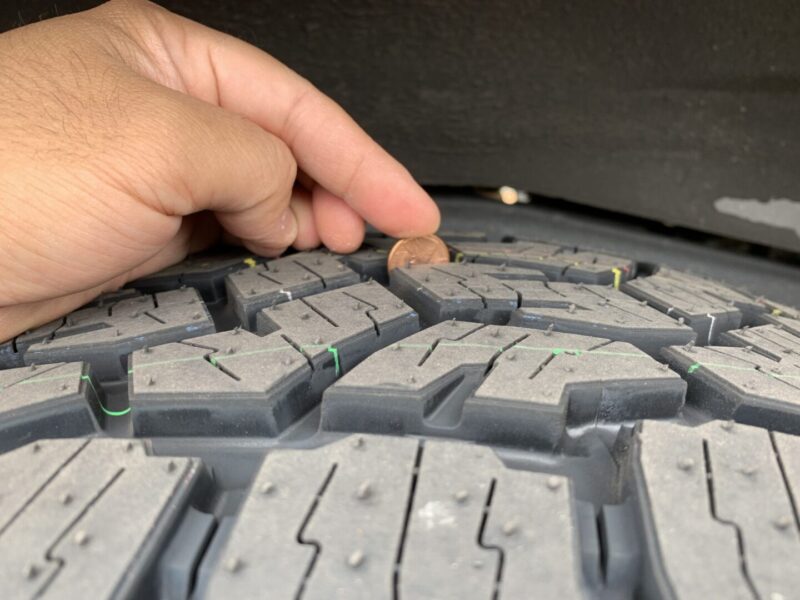
Hopefully that helps you with checking the tread depth on your tires using the penny test. Obviously, using a penny to measure doesn’t give you as precise of a measurement as using a real tire tread depth gauge, but it offers an easy way to quickly give you an idea as to how much tread you have left on your tires.

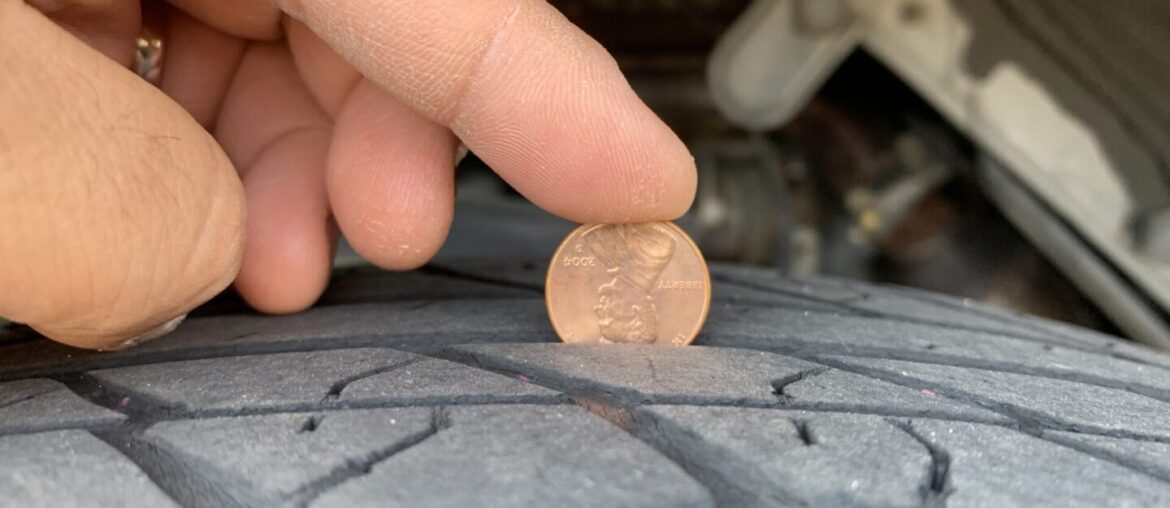

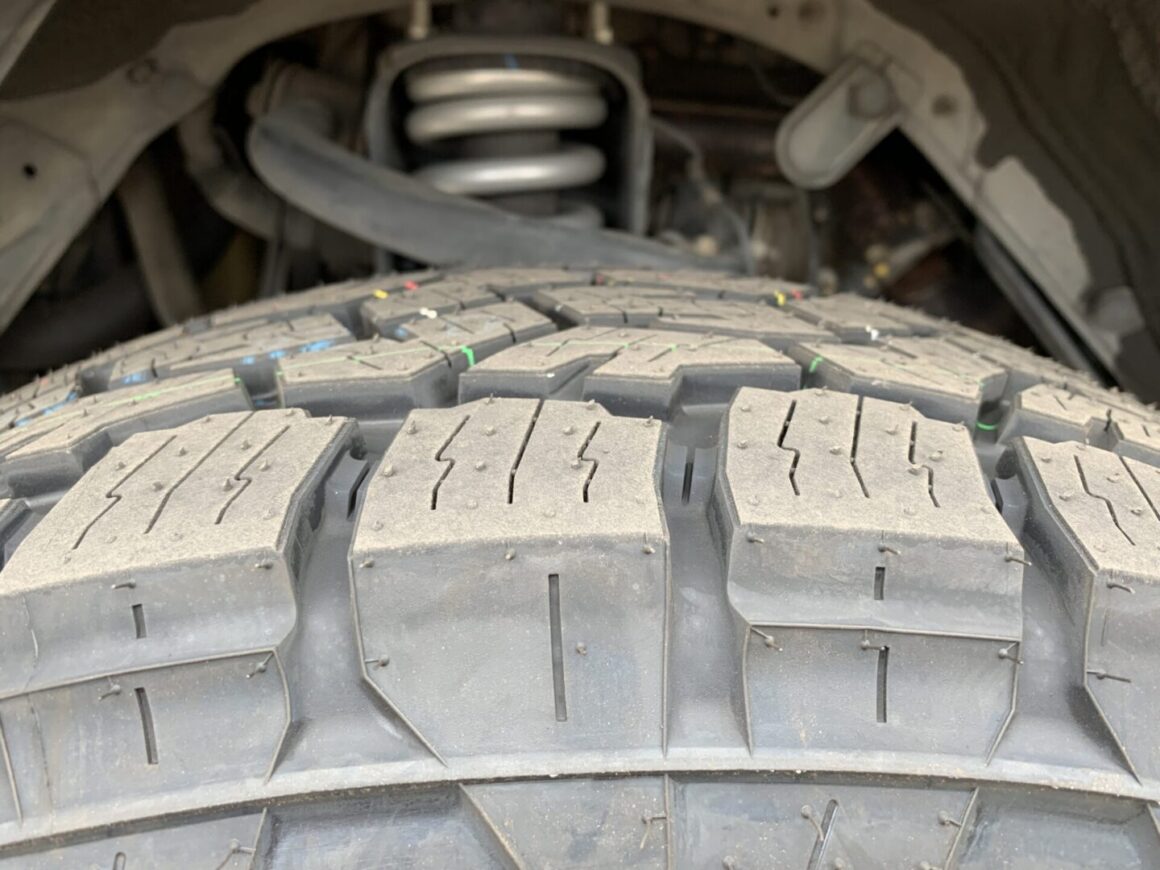
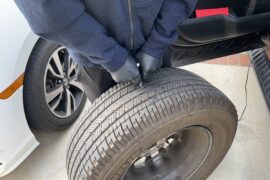
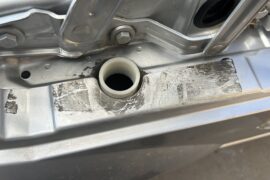
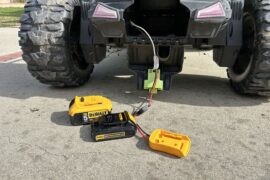
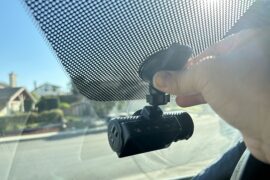
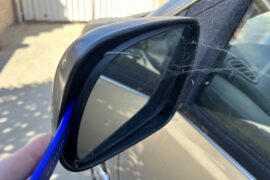
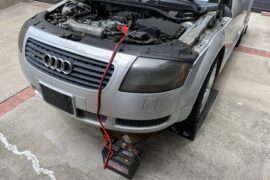

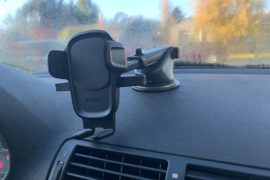
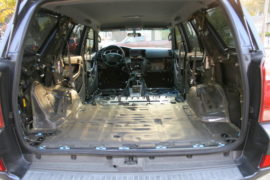
2 Comments
There are many ways to check the condition of your car tires, but measuring tire tread with a penny should be the simplest and least expensive. Thanks for sharing these excellent tips.
Agreed. You’re welcome!